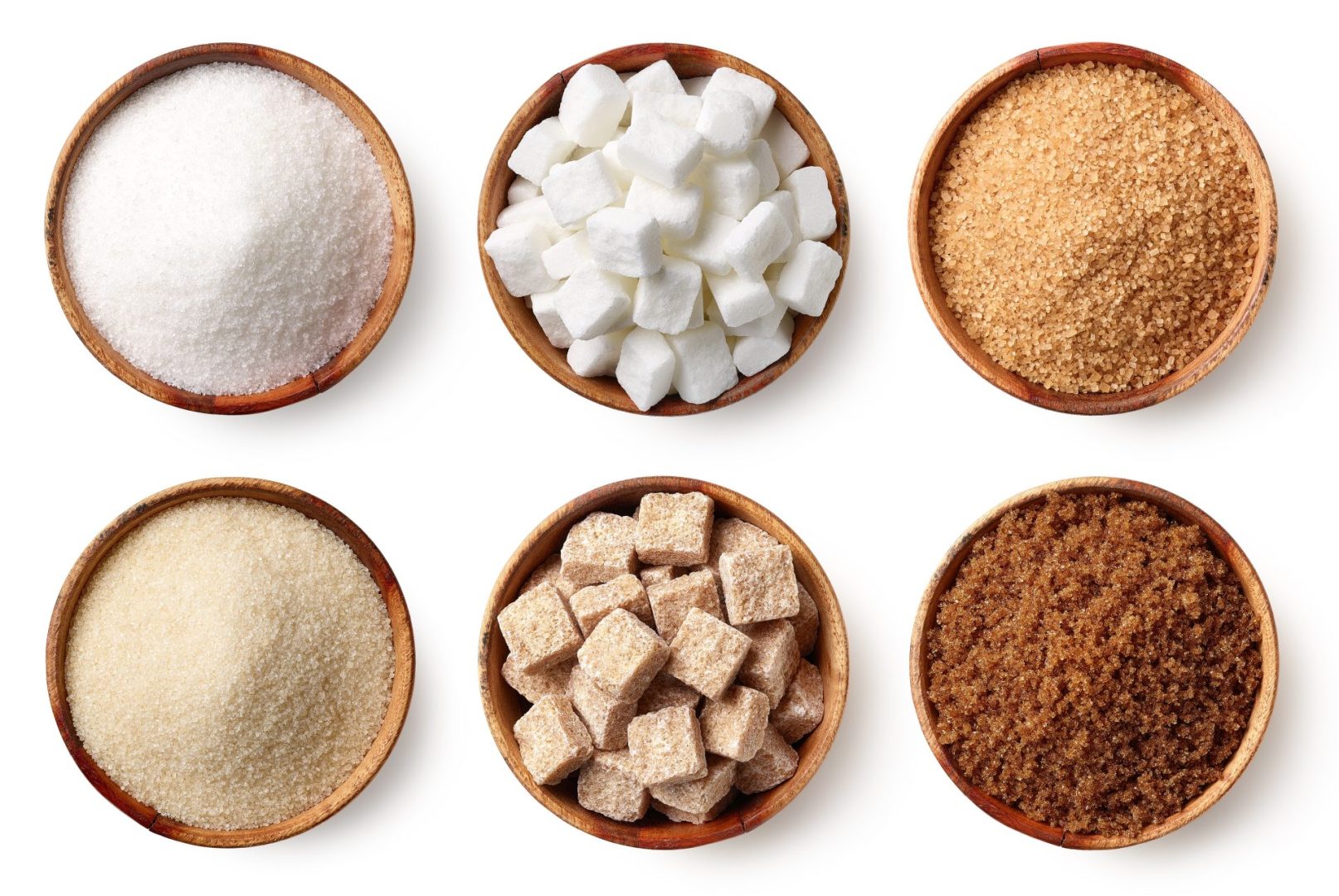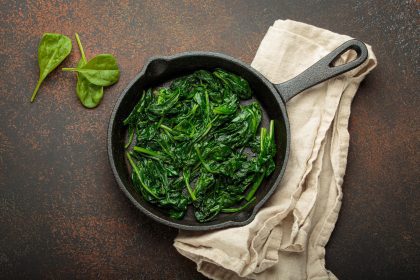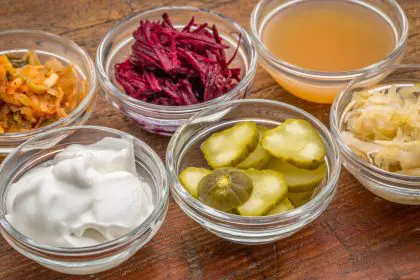The simple act of substituting brown sugar for white sugar in recipes creates a cascade of changes that extend far beyond what most home cooks realize. This seemingly minor ingredient swap transforms everything from flavor profiles and texture to nutritional content and even the visual appeal of finished dishes. Understanding these differences can revolutionize your approach to baking and cooking while potentially impacting your health in unexpected ways.
Brown sugar and white sugar may appear to be interchangeable sweeteners, but their distinct characteristics create dramatically different results when used in recipes. The molasses content that gives brown sugar its characteristic color and flavor also introduces moisture, acidity, and minerals that white sugar simply cannot provide. These fundamental differences ripple through every aspect of food preparation, from mixing and baking to storage and consumption.
The fundamental differences between sugar types
White sugar undergoes extensive processing that removes virtually all traces of molasses, creating a pure sucrose product with a neutral flavor profile. This refined sweetener dissolves easily, provides consistent sweetness, and creates predictable results in recipes. The crystalline structure of white sugar also contributes to specific textural properties in baked goods.
Brown sugar retains varying amounts of molasses, which can range from light traces to substantial concentrations depending on whether it’s light or dark brown sugar. This molasses content introduces complexity that affects every aspect of cooking and baking. The moisture in molasses makes brown sugar naturally more humid and prone to clumping, while its acidic properties can interact with other ingredients in unexpected ways.
The mineral content of brown sugar, though minimal, includes trace amounts of calcium, iron, and potassium that are completely absent in white sugar. While these minerals don’t provide significant nutritional benefits, they do contribute to the overall flavor complexity and can affect how the sugar behaves in recipes.
The glycemic impact of both sugars remains virtually identical, as the molasses content in brown sugar is too small to significantly alter blood sugar response. This means that switching from white to brown sugar doesn’t provide meaningful benefits for blood sugar management or diabetes control.
Flavor transformation effects
The most immediately noticeable change when swapping white sugar for brown sugar involves flavor enhancement. Brown sugar introduces warm, caramel-like notes with subtle hints of toffee and sometimes even slight smokiness. These complex flavors can either complement or clash with other ingredients, depending on the recipe’s overall flavor profile.
In chocolate-based recipes, brown sugar creates deeper, richer flavors that enhance the chocolate’s natural complexity. The molasses notes pair particularly well with dark chocolate, creating a more sophisticated taste experience. However, in delicate vanilla or fruit-based desserts, brown sugar’s assertive flavor can overpower more subtle ingredients.
Coffee and spice-based recipes often benefit tremendously from brown sugar substitution. The molasses flavors create natural harmony with cinnamon, nutmeg, ginger, and other warm spices. Coffee cakes, gingerbread, and spiced cookies often taste more authentic and complex when made with brown sugar instead of white sugar.
The intensity of flavor change depends on the proportion of brown sugar used and whether it’s light or dark brown. Light brown sugar provides subtle enhancement, while dark brown sugar creates dramatic flavor shifts that can completely transform a recipe’s character.
Texture and consistency changes
Brown sugar’s higher moisture content significantly affects the texture of baked goods. Cookies made with brown sugar tend to be softer and chewier than those made with white sugar, as the molasses retains moisture during baking. This can be either beneficial or problematic, depending on the desired final texture.
Cakes and quick breads often become more tender and moist when brown sugar replaces white sugar. The additional moisture helps prevent dryness and can extend the shelf life of baked goods. However, this same moisture can interfere with recipes that rely on sugar’s ability to create crisp textures.
The acidic nature of molasses can affect leavening agents in baked goods. When brown sugar is used in recipes containing baking soda, the acid-base reaction can create additional lift, resulting in lighter, more tender textures. This interaction can be particularly beneficial in muffins and quick breads.
Creaming brown sugar with butter requires more time and effort than creaming white sugar, as the molasses content makes the mixture denser and more resistant to incorporating air. This can affect the final texture of creamed butter cakes and cookies.
Nutritional impact considerations
The nutritional differences between white and brown sugar are often overestimated by health-conscious consumers. While brown sugar does contain trace amounts of minerals from molasses, these quantities are too small to provide meaningful nutritional benefits. The caloric content remains virtually identical between the two sugars.
The molasses in brown sugar does provide minute amounts of antioxidants, but the concentrations are so low that they don’t contribute significantly to daily antioxidant intake. The health benefits of choosing brown sugar over white sugar are essentially negligible from a nutritional standpoint.
However, the flavor complexity of brown sugar can lead to increased satisfaction with smaller portions of sweet foods. The richer, more complex taste may help some people feel more satisfied with less overall sweetness, potentially reducing total sugar consumption.
The moisture content in brown sugar can affect how quickly blood sugar rises after consumption, but this difference is minimal and doesn’t significantly impact the glycemic response compared to white sugar.
Baking performance variations
Brown sugar’s tendency to retain moisture can affect the shelf life and storage requirements of baked goods. Items made with brown sugar often stay fresh longer but may also be more prone to mold growth in humid conditions. Proper storage becomes more critical when using brown sugar in recipes.
The acidity in brown sugar can affect the color development in baked goods, often creating deeper, more golden-brown finishes. This can be particularly noticeable in cookies and cakes, where the enhanced browning can create more appealing visual results.
Measuring brown sugar requires different techniques than white sugar due to its tendency to clump. Packed measurements are typically required for brown sugar, which can affect recipe accuracy if not properly understood. This measuring difference can lead to variations in sweetness and texture if not properly accounted for.
The melting properties of brown sugar differ from white sugar, affecting how it behaves in candy making and caramelization processes. Brown sugar tends to melt at slightly lower temperatures and can burn more easily due to its molasses content.
Recipe compatibility factors
Not all recipes benefit equally from brown sugar substitution. Delicate recipes that rely on sugar’s neutral flavor profile may be overwhelmed by brown sugar’s assertiveness. Angel food cake, for example, typically requires the clean flavor of white sugar to maintain its characteristic taste.
Recipes that already contain molasses or other strong flavors may become overpowering when brown sugar is added. The cumulative effect of multiple molasses-containing ingredients can create an unbalanced flavor profile that dominates other ingredients.
Frosting and icing recipes often don’t work well with brown sugar substitution, as the molasses can create color and flavor issues that clash with the intended final product. The moisture content can also affect the consistency and stability of frosting.
Some recipes specifically call for the crystalline structure of white sugar to create certain textures or appearances. Meringues, for instance, rely on white sugar’s ability to dissolve completely and create stable foam structures that brown sugar cannot replicate.
Storage and handling differences
Brown sugar requires more careful storage than white sugar due to its moisture content. Exposure to air can cause brown sugar to harden and become difficult to measure and incorporate into recipes. Proper storage in airtight containers or with moisture-maintaining additives becomes essential.
The clumping tendency of brown sugar can make it challenging to incorporate evenly into recipes. Breaking up clumps and ensuring even distribution requires additional preparation time and techniques that aren’t necessary with white sugar.
Brown sugar’s sensitivity to temperature and humidity changes can affect its consistency and usability. Extreme temperatures can cause the molasses to separate or the sugar to become overly hard or sticky, impacting its performance in recipes.
The shelf life of brown sugar can be shorter than white sugar if not properly stored, as the molasses content provides a more hospitable environment for microbial growth under certain conditions.
Economic and practical considerations
Brown sugar typically costs more than white sugar due to additional processing requirements and lower production volumes. This price difference can impact household budgets, especially for families that use large quantities of sugar in cooking and baking.
The availability of different types of brown sugar varies by region, with some areas having limited access to specialty varieties like dark brown sugar or turbinado sugar. This can affect recipe planning and results for home cooks in certain locations.
The tendency of brown sugar to harden and clump can lead to waste if not properly managed, as hardened brown sugar may be discarded rather than revived. This waste factor can offset any perceived benefits of choosing brown sugar over white sugar.
Professional bakers often prefer white sugar for its consistency and predictability, while home bakers may appreciate brown sugar’s flavor complexity despite its handling challenges.
Long-term health implications
While the immediate nutritional differences between brown and white sugar are minimal, the flavor satisfaction factor of brown sugar might influence long-term eating patterns. Some individuals find that brown sugar’s complexity helps them feel more satisfied with sweet foods, potentially reducing overall sugar consumption.
The trace minerals in brown sugar, while insignificant individually, may contribute to overall mineral intake when consumed regularly over time. However, these contributions remain too small to meaningfully impact nutritional status.
The tendency of brown sugar to create more satisfying flavors might help some people transition away from heavily sweetened processed foods toward more natural, whole-food options. This behavioral change could have more significant health implications than the sugar swap itself.
Understanding the true differences between brown and white sugar empowers consumers to make informed choices based on their specific needs, preferences, and health goals rather than relying on misconceptions about their relative benefits.











